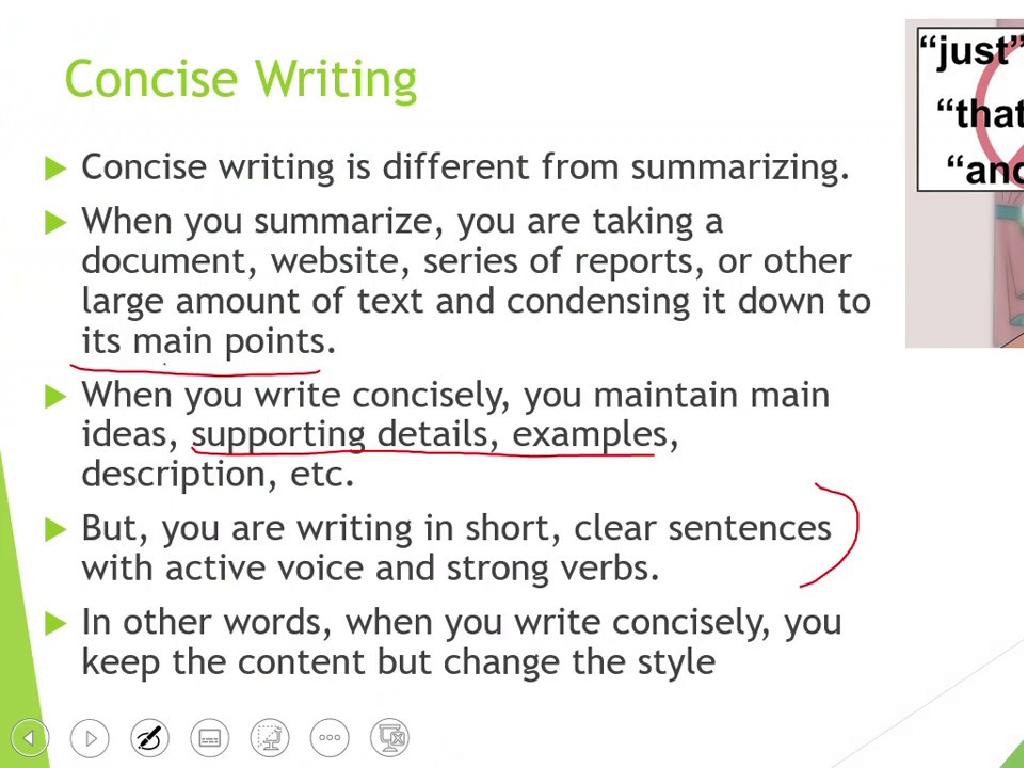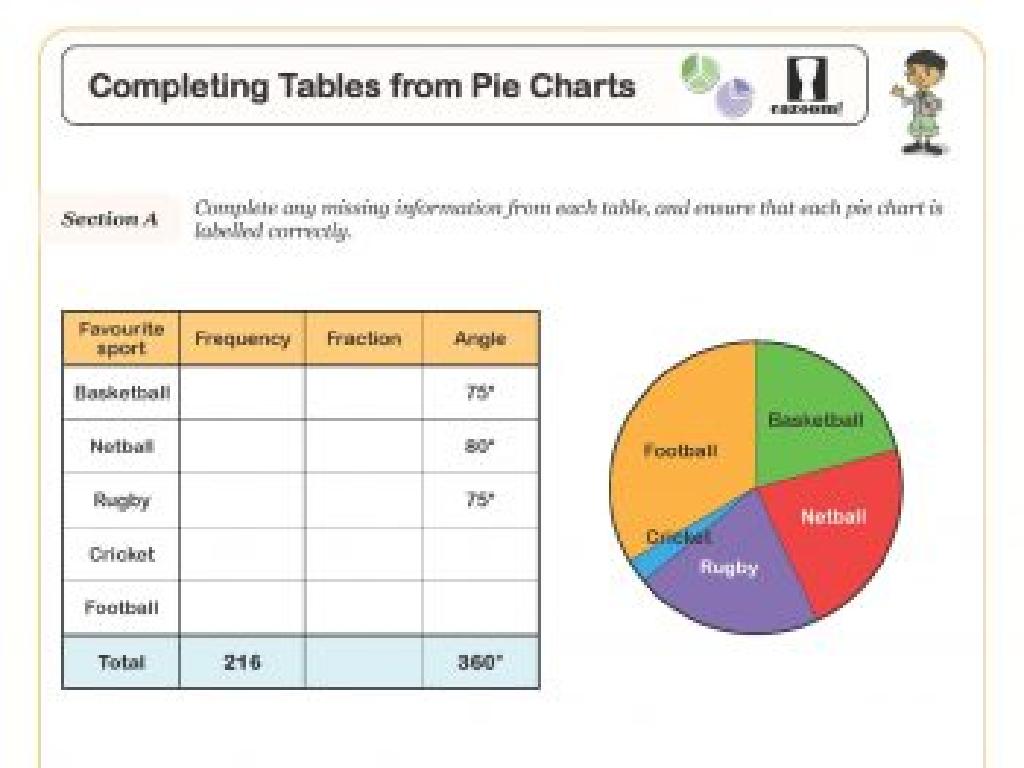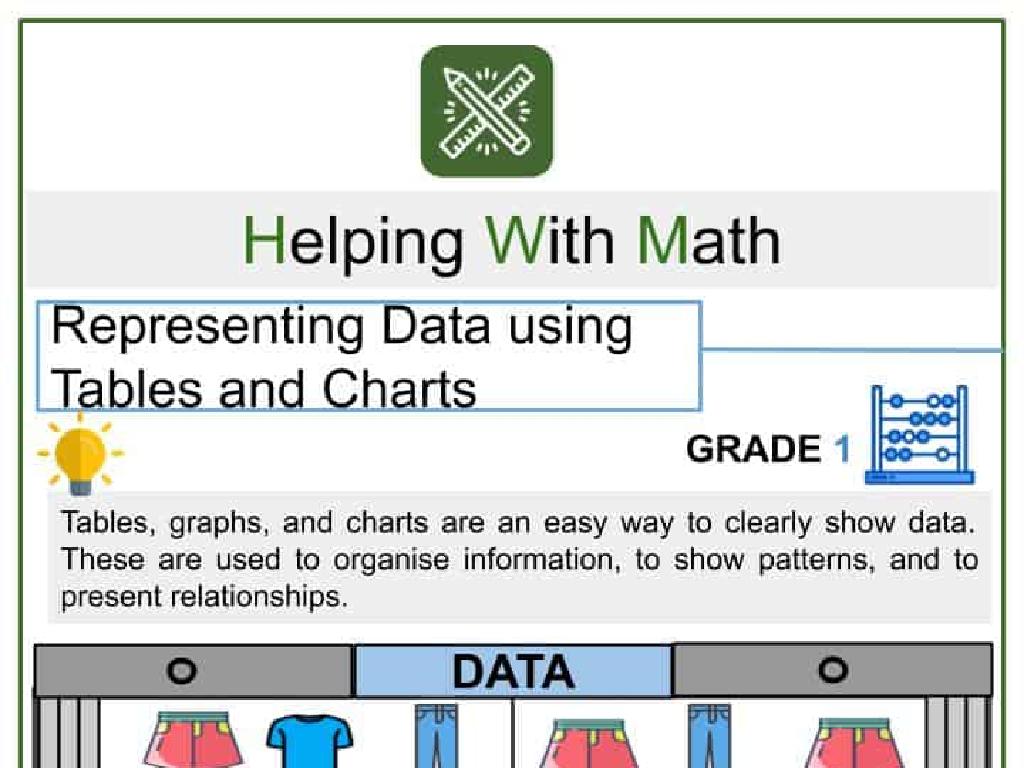Which Book Title Goes With The Picture?
Subject: Language arts
Grade: Third grade
Topic: Inference
Please LOG IN to download the presentation. Access is available to registered users only.
View More Content
Becoming a Reading Detective: Introduction to Inference
– What is inference?
– Inference is like being a detective, but for words!
– Using clues in text and pictures
– Look for hints in stories to guess what’s not written
– Think like a detective
– Use your ‘detective skills’ to figure out hidden meanings
– Practice inferring with book titles
– We’ll guess the right book title for different pictures
|
This slide introduces the concept of inference as a critical reading skill. Inference is the ability to understand something by using context clues rather than direct statements, akin to solving a mystery. Encourage students to think like detectives, looking for clues in the text and images that help them draw conclusions. Emphasize that they already use inference in their daily lives, such as figuring out someone’s emotions by their facial expressions. Activities can include matching book titles with illustrations or creating their own stories with clues for others to infer. This will help them practice inferring in a fun and engaging way.
Making Inferences: What’s the Story Behind the Picture?
– Inference in everyday life
– Using clues to figure out things not directly stated
– Guess weather by looking outside
– Is it sunny, rainy, or snowy? Look for clues!
– Understand feelings from faces
– Happy, sad, angry? Faces tell us a lot!
– Match book titles with pictures
|
This slide introduces the concept of inference as a way to understand things that are not directly stated, using clues from our environment. Start by explaining inference with relatable examples like predicting the weather by observing the sky or understanding someone’s emotions through their facial expressions. Then, connect these everyday examples to the activity of matching book titles with pictures, emphasizing how students can use visual clues to infer the story behind an image. Encourage students to discuss their inferences and the clues that led them to their conclusions. This will prepare them for the activity where they will practice inferring the content of a book based on its cover image.
Inference in Stories
– Use clues to get the story
– Look at pictures, guess the story
– Words have deeper meanings
– Some words mean more than they say
– Read between the lines
– Understand hidden messages
– Practice with book titles
|
This slide introduces the concept of inference in stories, a critical reading comprehension skill. Inference involves using clues from the text and pictures to understand the story beyond the literal words. Discuss why authors might not always say everything directly and how readers can ‘read between the lines’ to grasp the deeper meaning. Use examples of book titles and corresponding pictures to illustrate how a title might hint at the story’s content. Encourage students to think about what the title and the cover picture might tell them about the story inside. For homework, students can pick a book, look at the title and cover, and write down what they think the story might be about before reading it.
Match the Title to the Picture
– Observe the book cover images
– Think about the possible story
– Imagine what the story is about by looking at the cover
– Identify clues from the pictures
– Look for characters, settings, and actions in the images
– Discuss potential book titles
– Come up with creative titles that could match the story
|
This slide is designed to engage students in the practice of making inferences based on visual clues. By examining book covers, students will use their imagination and critical thinking skills to infer what the book could be about. Encourage them to look at details such as characters’ expressions, the setting, and any objects or actions that stand out. This activity will help them understand how to ‘judge a book by its cover’ in a literal sense and how to connect visual elements to potential storylines. In the next class, have a discussion where students share their title ideas and the clues that led them to those inferences. This will foster creativity and analytical thinking.
Practice Time: Inferring Book Titles
– Let’s practice making inferences
– Look at a picture carefully
– Observe the characters, setting, and actions
– Think of a creative title for it
– Imagine a story that fits the picture
– Use picture clues to help you
– What is happening? What might happen next?
|
This slide is designed to engage students in an activity that helps develop their inference skills, which are crucial for reading comprehension. Show a picture to the class and ask them to infer what the book title could be based on the visual clues provided. Encourage them to consider the setting, characters, and any actions or emotions that are depicted in the image. This activity will help students practice using visual information to make logical guesses about the content of a book, which is a key component of understanding stories and texts. For the teacher: Prepare several pictures beforehand and consider possible titles that students might come up with to guide the discussion after each student shares their title.
Group Activity: Create Your Own Book Cover
– Split into small groups
– Each group creates a book cover
– Use drawings, colors, and images to hint at the story
– Others guess the title and story
– Look at the cover and imagine what the book could be about
– Discuss your inferences as a class
|
This activity is designed to help students understand the concept of inference by creating and interpreting book covers. Divide the class into small groups and provide them with art supplies. Each group will create a book cover that includes visual clues about the story they’ve imagined. Once completed, other groups will try to infer the book’s title and story based on the cover alone. After the guessing, groups will reveal their intended story and discuss how the visual clues led to the inferences. This will help students grasp how to use visual elements as context clues and enhance their creative and critical thinking skills.
Review and Share: Inference Activity
– Groups present their book covers
– Classmates guess the book titles
– Think about what the picture might be telling us
– Discuss our inference methods
– How did the clues help us guess?
– Reflect on the activity
– What did we learn from this exercise?
|
In this activity, students will have the opportunity to showcase their creative book covers and practice their inference skills by guessing the titles of each other’s books. This will help them understand how to use visual clues and details to make educated guesses. Encourage the class to discuss the different strategies they used to infer the titles, such as looking at the images, the emotions they evoke, and any familiar elements that might hint at a story’s theme. Reflecting on the activity will help students realize the importance of observation and critical thinking in understanding and enjoying literature.
Reflection on Inference Skills
– Recap on inference learning
– We learned to make smart guesses based on clues.
– Inference in reading and life
– Using clues to understand stories and situations.
– Share a personal inference
– Think of something you guessed using clues today.
– Understanding our progress
|
Today’s lesson focused on the concept of inference, which is a critical reading comprehension and life skill. We discussed how to use clues from pictures and texts to ‘read between the lines’ and make educated guesses. In reading, this helps us understand the story better, and in life, it allows us to make sense of the world around us. Ask students to reflect on what they’ve learned by sharing an inference they made today, perhaps about a story or a classmate’s presentation. This reflection helps solidify their understanding of inference and recognize its value in everyday life. Encourage them to continue practicing this skill.





